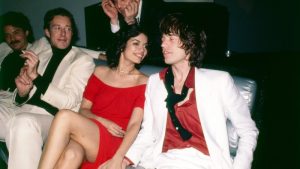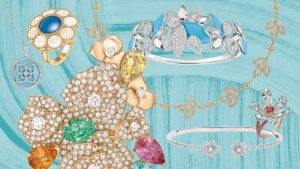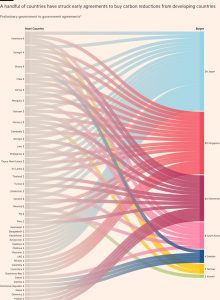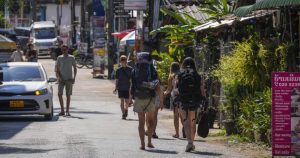an interview with Alice and Alba Rohrwacher
It’s an unseasonably hot day at the Hotel Locarno in Rome. Sisters Alice and Alba Rohrwacher are perched on stools in the bathroom, having their make-up retouched in between shrugging and shimmying in and out of Prada, JW Anderson and Etro for HTSI’s shoot. A hairdryer whines; the stylist’s steamer exhales a hot fug; the air conditioning is grievously overtaxed.
Alba, 45, an actress, is compact and slender, with Pre-Raphaelite hair and alabaster skin. Alice, 42, a film director, is tall and rangy, her eyes and limbs almost the same shade of tawny brown. They share an unequivocal likeness, but behave quite differently. As the temperature soars, the sisters tell a story about their childhood, a brief but amusing tale that explains something of where these two creative talents come from, and how they see the world.


“When we were little, we used to ride our bikes everywhere,” says Alba of their upbringing in rural Umbria by their German father, a beekeeper, and Italian mother, a teacher. “We were out on an isolated farm; sometimes we’d go all the way to the town, which was five kilometres away.” “Three,” interjects Alice. “Or four.”
“Four and a half,” concedes Alba. “Anyway. To get there you had to go through a pine forest. Which was scary because there were often hunters, with their rifles, and who knows what else. So when we’d get to the edge of the wood, before we went in, I’d turn to Alice and say, ‘Alice. Make an ugly face.’” Alice erupts into laughter; then, as one, they jut their jaws out and grimace spectacularly. It’s definitely an ugly face.
“Here were these two skinny spiders riding along — ” says Alba, “ — and the hunters,” finishes Alice, “were probably saying, ‘There go that German’s hideous daughters!’”

That German’s hideous daughters are now a unique phenomenon in the arts: collaborators who have brought their intimate familial stories to the screen, but also discrete creators whose talents shine from television series, feature films and shorts, and documentaries. Alba came to the attention of global audiences in 2009, in Luca Guadagnino’s I Am Love (playing Elisabetta “Betta” Recchi, the daughter of Tilda Swinton’s Emma). Last year she co-starred with Danny Huston, Greta Scacchi and Valeria Bruni Tedeschi in Te L’Avevo Detto (I Told You So), the second film from Ginevra Elkann (Alba also featured in her 2019 writing-directing debut, Magari). Most recently, she was seen on the red carpet for Maria, a biopic about the opera singer Maria Callas in which she plays a devoted housemaid, at the Venice Film Festival. She has just returned in My Brilliant Friend, the HBO adaptation of Elena Ferrante’s Neapolitan quartet of novels.

“Ferrante is part of our family’s pantheon, our divinity of female writers, all of them women I felt I knew,” says Alba of the series, which she has always narrated and in which she now stars, in the fourth season, as the adult Elena Greco. “It has been a voyage into the soul of this character, and has changed me as a person and an actress.”
Alice, by contrast, lives and creates from behind the camera. She still lives in rural Umbria. She wrote and directed her first feature, Corpo Celeste (Heavenly Body) — about a 13-year-old girl returning with her mother to a life in deep southern, Catholic Italy from a childhood in Switzerland — in 2011. It premiered at the Cannes Film Festival’s Directors’ Fortnight to critical acclaim. She has gone on to write and direct 11 films and documentaries, five of them collaborations with Alba. While Alba was in Venice for the premiere of Maria, Alice was there to show Allégorie Citadine (An Urban Allegory); her second co‑directing collaboration with the artist JR, it’s a short that takes Plato’s Allegory of the Cave as its inspiration, set in modern-day Paris.


“Alice is charming, highly intelligent, very matter-of-fact,” says Isabella Rossellini, who worked with Alice on this year’s La Chimera, which also starred Josh O’Connor. “I think she’s going to be a director as important as Federico Fellini; she is a major talent.”
Observed closely, the sisters tell their own quiet but engrossing story. There are looks exchanged, subtle and encoded with meaning, the articulate silence of siblings. There are giggles, because: sisters. And, as always with families, there is unconscious role declaration. “The relationship is sweet, but Alba is clearly the oldest,” says Ginevra Elkann. At one point, in a gesture tinged with maternal exasperation, Alba reaches up to smooth down the collar of a sweetly compliant Alice, who towers over her big sister. “Our upbringings were very different — they were raised in a very particular way,” continues Elkann, who is a scion of the Agnelli family. “But there’s something so familiar to me about them. To have felt that awkwardness, the otherness from everyone else — that connects us somehow.”
Alice’s films might be set in prosaic landscapes and earthly environments — the Tuscan countryside, a church sanctuary in Reggio Calabria — but her narratives bleed into each other like layered watercolours; the atmospheres she creates are redolent of fables and the allegories they contain. This doesn’t surprise her older sister, who describes the unorthodox childhood the sisters shared, free-ranging across the hills and pine forests of Umbria, as containing “great tumult” but also a great deal of freedom and fantasy.

“She watched the world around her, and always knewhow to transform it into something very personal,” Alba says. “Anything she touched, creatively speaking, she made flourish. She was adept at creating little worlds — she could do it with a crumb of bread, with musical notes, with watercolours, with words. So her approach to cinema was very natural.”
In contrast to Alice, whose considered silences beget fast, discursive but eloquent ribbons of thought, Alba articulates herself slowly, with measured precision. She has a “very privileged access code” to whichever world her sister creates. “Because I recognise the materials it’s made of; I recognise the dreams that she tints it with.”


The sisters’ first feature project together was Le Meraviglie (The Wonders), for which Alice was awarded the Grand Prix in Cannes in 2014. It’s in part plainly autobiographical: the parents in the story are German-Italian beekeepers; they and their four daughters move to the same testudinal agricultural rhythms that the Umbrian land has followed for millennia — until one day Gelsomina, the eldest, is dazzled by the arrival of a glamorous television presenter hosting a local cultural contest. Ambitions are sparked, horizons seismically expanded, the family ruptured.
Alba plays the role of their mother, but she is Gelsomina; while the contest is fictitious, the 12-year-old’s fiery tenderness is based on Alice’s recollections of her sister in their youth. “I decided to return to my world, our world, as the setting, a place that so closely resembled one I know deeply from my own life,” says Alice. “But I switched the viewpoint from my own to that of the person I love and admire most, Alba. I wanted to inhabit her gaze, that of the eldest child — not the little one who hides behind her, but the one who opens doors, goes out in the world, who breaks that mechanism that needs to be broken, which is the family.”
“We hadn’t discussed me acting in it, at all,” says Alba. “But with her recounting of that character, she had already deeply involved me. I remember how strong my reaction was the first time I read the screenplay, because the things that were happening to Gelsomina [emotionally] were things that happened to me.”
On one hand, she says, it was a sort of “psychoanalytic session. I’m a very private person; Alice is much more out in the world than I am. It was a very strong sensation, finding myself in that fantasy, and seeing myself through her eyes. But Alice’s art was in knowing exactly how to imbue it with poetry. That’s her gift.”
Rossellini concurs: “There’s a poetic dimension to Alice that moves me; she is both naive and wise.” “They both have a lot of poetry in them,” says Elkann.

I ask the sisters if there are any other collaborations currently in the works. Alice starts and stops; then Alba. Then laughter. “We have thoughts,” Alba says. “We have lots of other projects going on separately, but I’d love nothing more,” says Alice. Then a brief and affectionate bickering erupts about schedules, Alice insisting she’s keen, Alba knows this, but she has so many things in the works . . . then more laughter.
“We have an idea,” says Alba. “For years we’ve had this idea. Alice had it, actually, it’s hers. But we both nurture it, sort of our little treasure. An absurd idea; and who knows, one day we’ll probably do it.”
Lots of people are rooting for it. “I’m moved by their work,” says Rossellini. “I see the history of Italian cinema evolving and having a new voice, a woman’s voice.” One space, and two sisters, worth watching.
Hair, Roberto D’Antonio. Make-up, Nicoletta Pinna. Styling assistance, Silvia Pirolli. Special thanks to Caterina Valente, Sara Zaninelli and the team at Hotel Locarno, Rome
#interview #Alice #Alba #Rohrwacher









